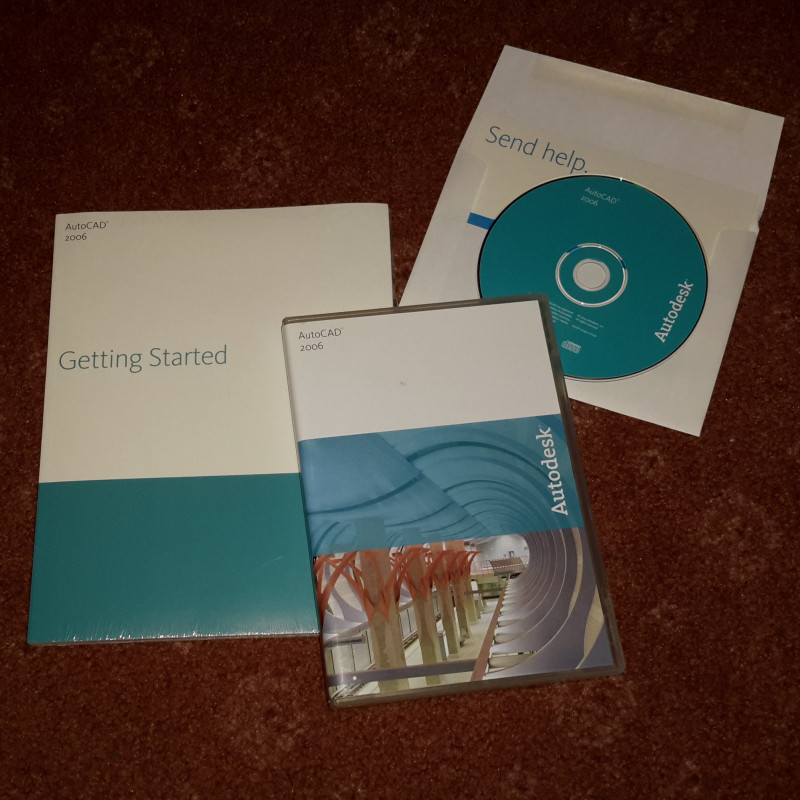In this series of posts, I am looking back on all the AutoCAD upgrades I’ve experienced over the years and rate each of them out of 10. See post 1 for information about what the ratings mean.
In part 3, I rate AutoCAD 2004 to AutoCAD 2010.
- AutoCAD 2004 (March 2003): 5 -The return of Express tools was a good start. Better still, Autodesk’s abortive attempt to sell Express Tools as an extra meant some effort had been put into improving them and they were much bigger and better in 2004 than they were in 2000. The death of the annoying UI stuff didn’t come a moment too soon. This upgrade had a few other useful additions and the new DWG format was more efficient, but overall nothing to get too excited about.
- AutoCAD 2005 (March 2004): 4 – Autodesk introduced the Sheet Set Manager with this release; I guess one day they’ll get around to finishing it. Likewise, tables were useful but still imperfect today. Improved hatching. Fields. No DWG or API change. Mediocre.
- AutoCAD 2006 (March 2005): 5 – Dynamic blocks (2D only) and in-place block editing came along with a bunch of extra palettes to make this a decent release in terms of new functionality. No DWG or API change. Big changes to customization, though, with the CUI command and format. CAD Managers had some serious rethinking to do. Migrating settings never worked properly for me in a custom environment from this release on. Losing the ability to easily customize toolbars directly on-screen was a pain; despite some advantages the CUI interface was excruciatingly slow, with a poor UI and bugs that remain to this day. No DWG or API change. This is the release where I really started to notice AutoCAD performance start to decline as a result of bloat and/or poor development, a trend that was to continue long-term and affects the value (and my rating) of each upgrade.

- AutoCAD 2007 (March 2006): 6 – The Dashboard (later to become the Ribbon), visual styles, many 3D improvements, better rendering and new 3D to 2D methods make this a decent upgrade that 3D users in particular wouldn’t want to do without. The new DWG format and API version were inconvenient, but by now an expected part of the cycle.
- AutoCAD 2008 (March 2007): 2 – Table enhancements were very handy for people using huge tables in their drawings, and most of the text enhancements were welcome. Annotative scaling was the big drawcard in this release, but Autodesk released it unfinished and therefore got it very wrong. The _XREF _XREF _XREF bug infested drawings and led to all kinds of apparently unrelated problems that persisted for years. Multileaders were another one of those good ideas that Autodesk insists on implementing badly, in this case by splitting off the styles from dimension styles and causing backward compatibility issues. The unreconciled layer warnings proved annoying for most and harder to turn off than they should have been. Overall, AutoCAD 2008 was a release to skip, even if you had paid for it.
- AutoCAD 2009 (March 2008): 6 – The Ribbon release, and arrival of the Big Red A. The Ribbon was horribly slow and some people thought Autodesk should have dealt more with substance than appearance, but there were many other changes (mainly UI) that provided a genuine practical benefit. I think the ViewCube is awesome; the steering wheel, not so much. On the negative side was the mass of “idiot box” dialogs that kept popping up to interrupt your flow. You could turn them off, but not pre-emptively. The massive tooltips that repeatedly rose up to obscure everything were beyond annoying. The layer palette would have been good had it not been such a performance drag. Autodesk put a lot of effort into Action Recorder but failure to listen to what people wanted in a macro recorder meant that effort was wasted on a flop.
- AutoCAD 2010 (March 2009): 6 – Lots of effort was put into 3D, particularly some clever work with surfaces. Geometric constraints were big news, but not as big as they could have been had they not been restricted to 2D. A downside to this release was that it removed the do-it-yourself inter-PC license transfer mechanism and introduced a web-based method that requires Autodesk’s ongoing cooperation (and existence). Better PDF support and non-rectangular viewports and xref clipping were welcome. Less welcome was Initial Setup, another of Autodesk’s many reviled attempts to get in your face at startup rather than letting you draw. This Ribbon was better than its predecessor, but still a Ribbon so most users ignored it. The new DWG format and API version were inconvenient but expected. Deserves some credit for being the last AutoCAD release with a decent Help system.
Part 1 – AutoCAD Version 1.4 to Release 11.
Part 2 – AutoCAD Release 12 to AutoCAD 2002.
Part 3 – AutoCAD 2004 to AutoCAD 2010.
Part 4 – AutoCAD 2011 to AutoCAD 2017.
Part 5 – Summary.
Do you agree or disagree with these assessments? Feel free to share your memories and experiences.
